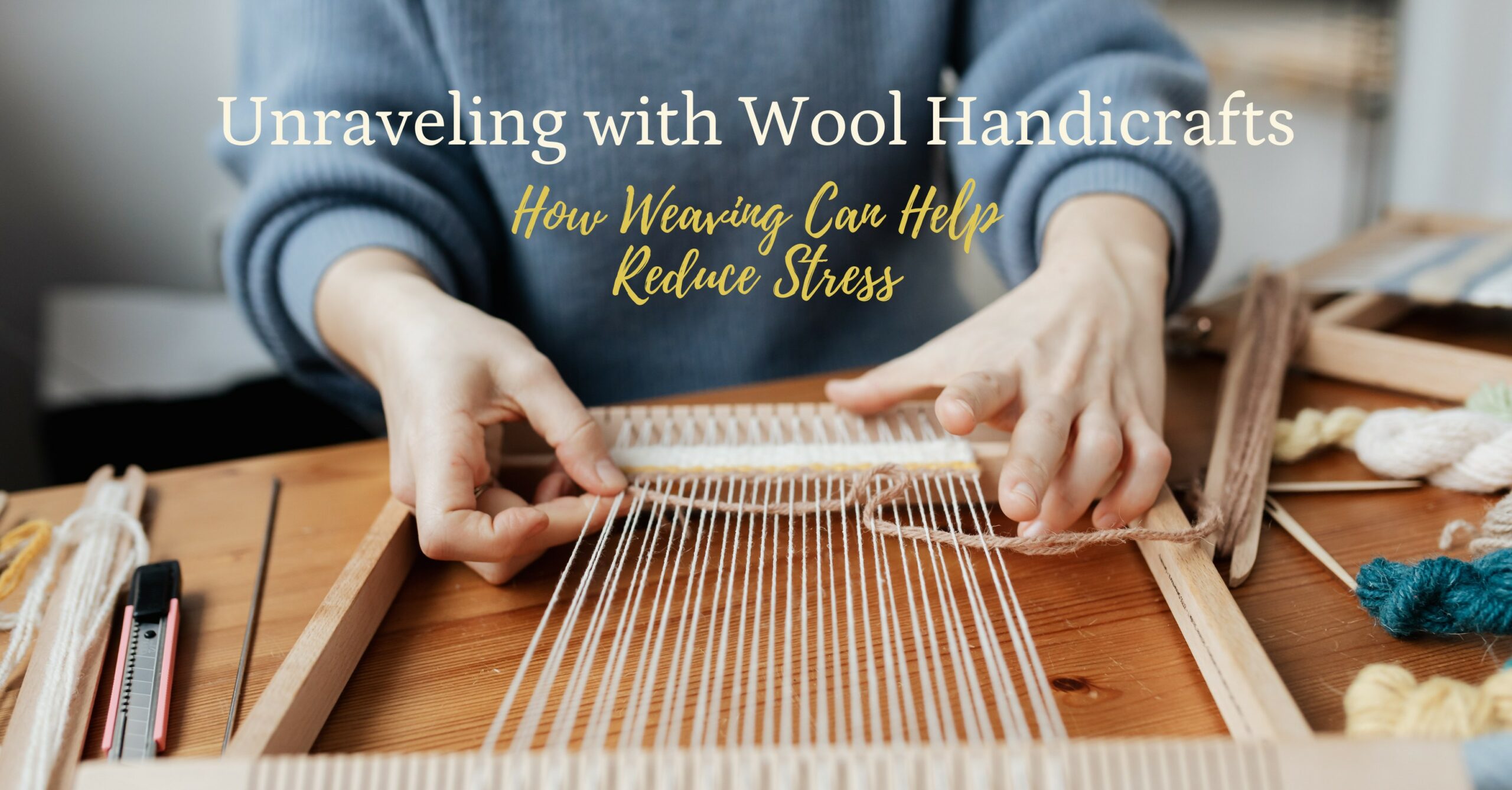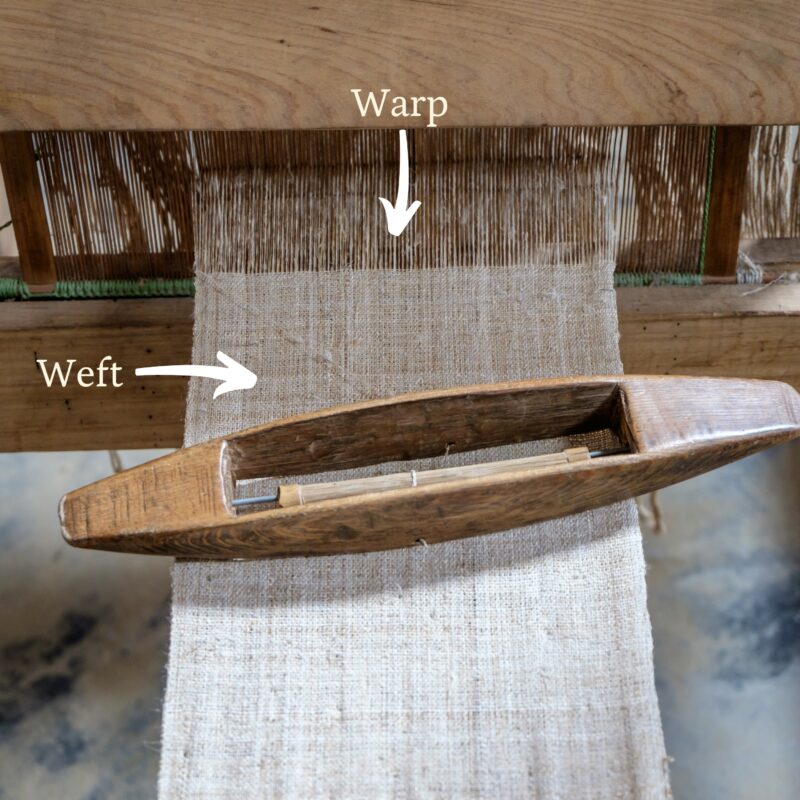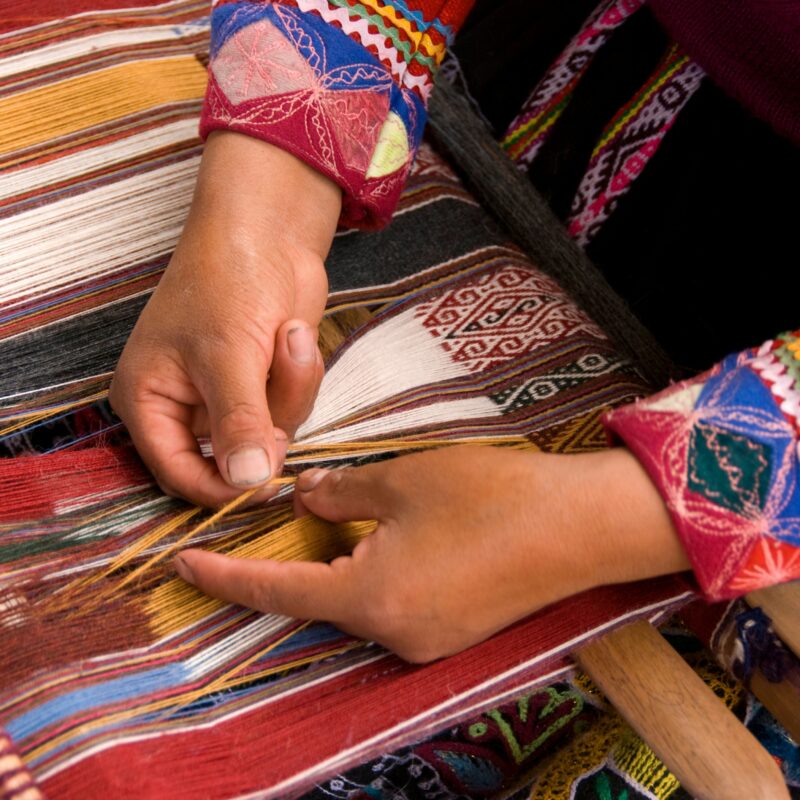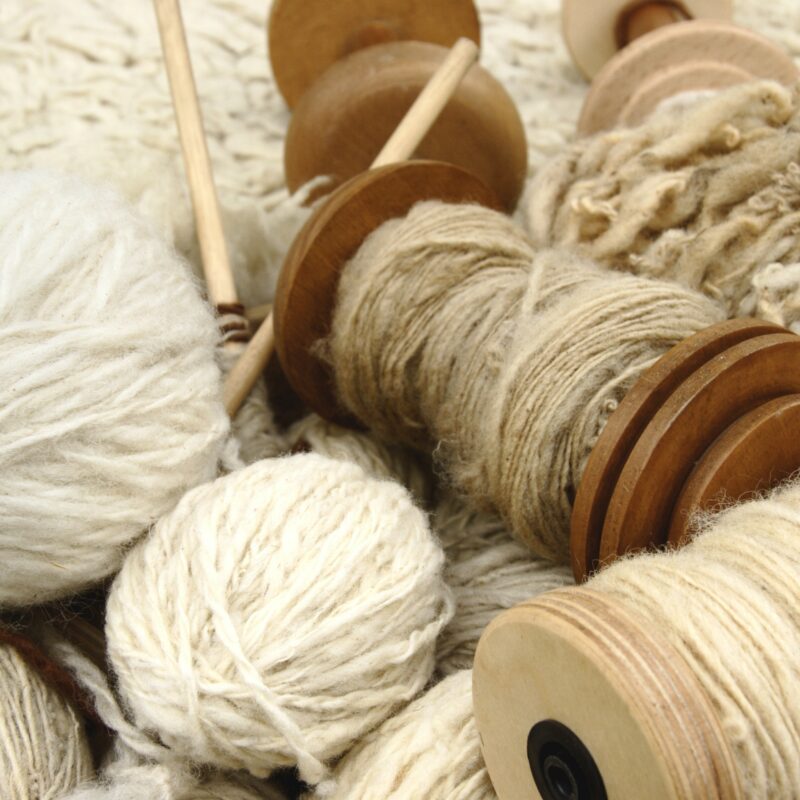Unraveling with Wool Handicrafts
How Weaving Can Help Reduce Stress
Recently, NPR featured a piece by Natalie Escobar, one of their news editors, about how she stumbled onto weaving in 2020 during the pandemic. If we close our eyes and recall…there were the early days when everyone was home and the whole thing seemed novel and we all thought it might just take a few weeks to calm down. But then, as Natalie tells it, “I had tried all the early-pandemic activities I could think of—sourdough starter, anyone?—and as the months passed, I grew sick of Zoom happy hours and TV marathons, and started searching anew for something—anything—to fill the ever-expanding days.”
Natalie’s pandemic haze-scrolling led her to this article called This Loom Saved Me When All My (Pre-Pandemic) Hobbies Disappeared. She purchased everything recommended in the article and set out on her new adventure.

But First…A Brief History of Weaving
Weaving is an ancient art, and one that many cultures developed independently across the planet. The earliest possible evidence of weaving was discovered in the southern part of the modern-day Czech Republic and was dated to approximately 27,000 years ago. In the Americas, the oldest known specimens in the south came from Peru (10,100-9,080 BCE) and in the north from Florida (4,900-6,500 BCE).
Truly, one can get lost in weaving’s story. The Wikipedia page alone is fascinating, and a worthy rabbit hole. (It’s cool, we’ll still be here when you’re done.)
Suffice to say, weaving has played an important role in culture, and references to it are the stuff of myths and legends. There’s the Greek myth of Athena and Arachne, Spider Grandmother of Hopi (Kokyangwuti), Navajo (Na’ashjé’ii Asdzáá), and Zuni (A:shiwi) origin stories, the goddess Neith in Egypt, the Goddess Weaver of China, and more.
Many of these stories were so foundational that they found their way into immortality via the stars. In Scandinavia, the stars of Orion’s belt are known as “Frigg’s distaff,” with Frigg being Odin’s wife and the distaff being a tool used to spin fiber into thread. The stars Vega and Altair are associated with China’s star-crossed lovers, Goddess Weaver and her beloved Buffalo Boy. As the story goes, their forbidden love was the cause of the Milky Way appearing at night when her mother tore the sky to keep them apart. And because domesticated animals were so crucial to certain cultures—especially wool-bearing ones—our favorite ruminant, the sheep, appears as the constellation Aries.
These old-world traditions continue to inspire today. Right now, there’s a big return to handmade items and supporting skilled artisans, reflected in home decor’s focus on a soft and natural feel, along with a more neutral color palette informed by natural fibers and dyes. Even non-loomed items are giving a nod to the past—we’re enamored of Coyuchi’s new Noe Duvet Cover, which takes its design cues from rustic backstrap loom patterns.
The Ins & Outs of Weaving
Weaving is essentially simple, but requires skill, technique, and practice. Looms vary in complexity, from the backstrap loom consisting of two sticks with the warp (longitudinal) threads threaded between them, to treadle looms with many moving parts like foot pedals.
Natalie set out on her own, beginning without much instruction, but soon frustration set in: “I pulled the yarn way too tight, making the sides curve in. There were lots of gaps, where you could see the white warp thread peeking out from underneath the colored yarn. And when I reached the bottom of the loom, I couldn’t figure out how to make the long fringe that I saw on other tapestries—and, in a fit of frustration, left the bottom a scraggly mess.”
She decided to open the instruction book and learn the simple stitches, building on them over time to create tapestries and pillow covers. These became gifts for friends and family, and eventually, people began approaching her to make custom pieces for them.
Making Good = Feeling Good
What Natalie discovered is something that people have known for millennia—handiwork is grounding, relaxing, and useful. Our modern lives are faster paced and we’ve become removed from the source of the items we buy, often forgetting that it wasn’t that long ago that if we wanted something, we had to make it ourselves or make do without it. Today, we just go to the big box store or order it online to be delivered to our door.
There’s something to be said for remembering how to create with our own two hands. Weaving and other handicrafts like felting (check out our blog on that!), knitting, crocheting, beading, embroidery, and macramé bring so many benefits:
- Mindful Focus. Engaging in a handicraft like knitting or weaving requires a certain level of focus and attention to detail. This meditative flow helps to calm the mind, reducing stress and anxiety.
- Repetitive Motion. The repetitive motion of knitting or weaving is soothing and provides a sense of rhythm and predictability. This creates a relaxing and comforting atmosphere, helpful for reducing stress and promoting feelings of well-being.
- Creative Expression. Creating something with your hands can be a fulfilling and rewarding experience. When you’re engaged in a handicraft like knitting or weaving, you’re able to express your creativity in an empowering way that provides a sense of accomplishment.
- Sharing with Others. Having a specific interest like weaving can connect you with people who also enjoy it, giving you a community centered around a beneficial activity. And when you’re done, you have a unique, tangible item that can be given as a gift to someone you care about—they’ll think about you every time they see it!
We’re totally biased of course, but we think it’s especially cool when handicrafts involve all-natural, non-toxic, and earth-friendly wool. You can purchase our super clean and amazing wool batting and craft wool, which can be used to spin your own thread or fill projects like pillows, quilts, and stuffed toys.
Unwinding with Wool Weaving
Tied up in knots? Looking for ways to increase mindfulness, manage stress, and engage your creative expression? Consider weaving! Your adrenals will thank you (read more on cortisol and how it affects your sleep here).
As Natalie reports from her adventures in weaving, “My therapist, who’d once observed that my hands get fidgety when I’m anxious, recommended that I keep them busy to keep the nerves at bay. And since then, weaving has become a way to ground myself—in the tangibility of yarn and thread and stitching—and to make something beautiful at the same time.”
Give us a follow on Instagram and Pinterest for more on living with the wonders of wool. And as always—Sweet Dreams!




